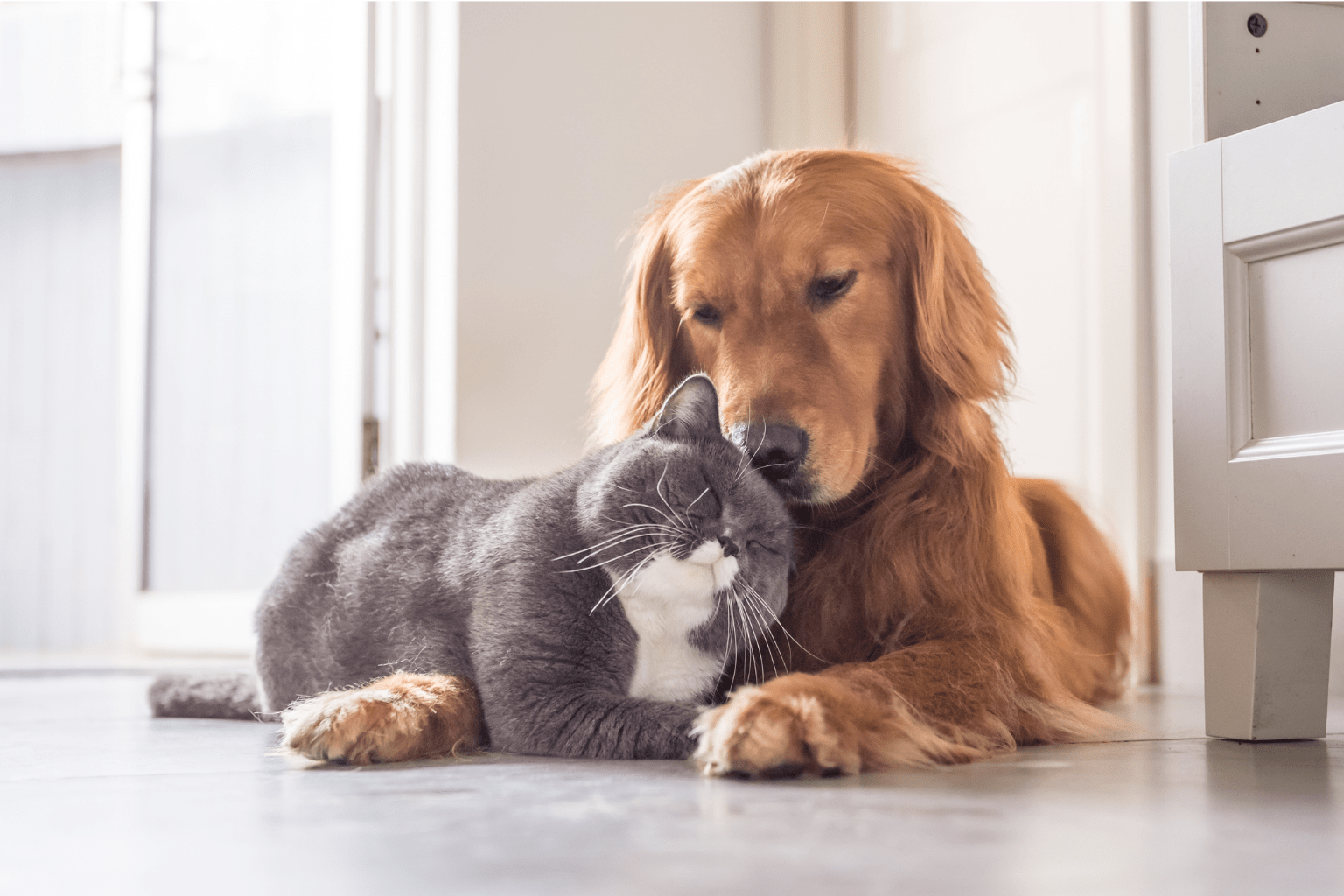Key Takeaways
- Moving with pets involves more than just packing their belongings.
- Pets experience stress differently and may not understand changes in their environment.
- Up to 40% of dogs show anxiety during major lifestyle changes.
- Cats often hide for days when faced with stressful situations like moving.
Table of Contents
- Why Moving With Pets Is Different, And How We Can Make It Better
- Planning Your Move, First Steps for Pet Parents
- Choosing and Preparing Your New Home, Pet-Safe Decisions
- Packing, Routine, and Reducing Pet Anxiety
- Moving Day Must-Knows, Keeping Pets Safe, Calm, and Accounted For
- Travel Methods Compared, Pick The Right Way For Your Pet's Needs
- Essential Travel Prep, Calm, Secure, and Pet-Ready
- Pet-Proofing & Setting Up The New Home, First Hours and Days
- Troubleshooting Common Moving Challenges, Your Q&A Rescue Section
- Veterinary, Legal, and Identification Must-Dos
- International and Long-Distance Moves, Rules and Requirements
- BestLife4Pets Natural Wellness Support, Gentle, Proven Help
Why Moving With Pets Is Different, And How We Can Make It Better
Moving pets isn't just about packing their toys and food bowls. Our furry family members experience stress differently than we do, they can't understand why their safe space is suddenly filled with boxes or why strangers are carrying away their favorite couch. Up to 40% of dogs show anxiety during major lifestyle changes, and cats often retreat into hiding for days.
The good news? With gentle, natural support, most pets adjust within 2-4 weeks. Unlike harsh medications that can leave pets groggy or unsettled, homeopathic remedies work with your pet's natural healing response to ease the transition. Think of it as giving them the emotional tools they need to navigate change, just like we might take a deep breath or call a friend for support.
Gentle, natural support can help most pets adjust within 2-4 weeks. Unlike harsh medications, these remedies work with your pet's natural healing response to ease the transition.
Quick Facts: How Pets Respond to Moves
- Dogs: May pace, pant excessively, or refuse to eat for 24-48 hours
- Cats: Often hide, avoid litter boxes, or become unusually vocal
- Small mammals: Can show stress through changes in grooming or eating patterns
- Recovery time: Most pets settle into new routines within 2-4 weeks with proper support
"Bailey hid under the bed for two days after our move, but daily support helped bring them out," shares one pet parent from our community. This gentle approach honors what our pets need most during transitions: patience, routine, and natural wellness support.
Planning Your Move, First Steps for Pet Parents

The secret to successful moving pets lies in preparation that starts well before the first box appears. Begin natural calming support 3 days before packing intensifies, this gives your pet's system time to build resilience before the chaos begins.
Maintaining familiar routines becomes crucial during this phase. Feed at the same times, keep walk schedules consistent, and resist the urge to "practice" with carriers until you've established that baseline calm. Rachel, who manages multiple rescue animals, learned this lesson: "I start calming support three days before box chaos to ease stress in my senior terrier, it makes all the difference."
For more helpful advice on keeping your pets calm and safe during travel, check out these tips for travelling with pets.
| Pet Type | Key Preparations | Timing Notes |
|---|---|---|
| Dogs | Extra walks, familiar toy rotation, carrier introduction | Start support 3 days before major packing |
| Cats | Leave carriers open in living spaces, maintain litter routine | Begin stress support when boxes first appear |
| Birds | Cover practice, noise desensitization, secure perch setup | Gradual changes over 5-7 days |
| Small Mammals | Travel cage setup, familiar bedding prep, quiet space planning | Minimize disruption until moving day |
Choosing and Preparing Your New Home, Pet-Safe Decisions
Before you fall in love with that perfect house, think like your pet. Dogs need secure fencing (check for gaps wider than 4 inches), safe walking routes, and reasonable noise levels. Cats require secure window screens that can hold at least 8 pounds of pressure and vertical spaces for climbing and hiding.
Create a "home base" room before moving day, a quiet space with familiar scents, favorite toys, and easy access to food, water, and comfort items. This becomes your pet's safe haven while the rest of the house settles into place. Gary, a Lab dad, checked local leash laws and installed pet gates in the entryway before his move, giving his senior dog clear boundaries from day one.
For smaller pets, ensure at least 8 square feet of secure space per animal, away from high-traffic areas. This isn't just about safety, it's about giving your pet permission to decompress at their own pace.
Packing, Routine, and Reducing Pet Anxiety
Start the box introduction slowly, leave moving boxes open with toys inside for 7 days before serious packing begins. This transforms scary cardboard into familiar furniture. Fiona discovered this trick worked beautifully: "I left an open carrier in the living room for five days, my kitty was napping inside by day three!"
Defend your pet's routine fiercely during this phase. Keep feeding times within 30 minutes of normal schedule, maintain regular walks, and add extra playtime to burn off nervous energy. When the packing pace intensifies, gentle homeopathic support helps maintain emotional balance without the drowsiness of pharmaceutical options.
For additional natural ways to support your pets, read our guide on homeopathic natural remedies for pets.
Top 3 Ways to Calm Moving Day Jitters
- Morning routine first: Feed and walk before any packing activity begins
- Natural support: Administer calming remedies with breakfast for all-day balance
- Designated quiet time: Schedule 20-minute calm periods every 3 hours during peak activity
Moving Day Must-Knows, Keeping Pets Safe, Calm, and Accounted For

The night before movers arrive, pack your pet's survival kit: natural support for anxiety, three days of food and water, comfort items, updated ID tags, and a disposable litter tray for cats or small mammals. This bag stays with you, not in the moving truck.
Establish a "safe room" away from the main moving activity, ideally with a door that locks from the inside. Never leave access doors open longer than two minutes at a time, and consider asking a trusted friend to help monitor pets while you coordinate with movers. One spilled water bowl solved with an absorbent towel and quick-access support can prevent a stressful cascade of events.
For pets with joint issues or mobility concerns during the move, consider joint & hip pain relief remedies to help them stay comfortable and safe.
| Pet Type | Essential Items | Safety Priority |
|---|---|---|
| Dogs | Leash, calming support, water bowl, favorite toy | Secure room with visual barrier to moving activity |
| Cats | Carrier, litter tray, calming support, familiar blanket | Quiet space with hiding spots and vertical perches |
| Birds | Covered travel cage, calming support, seed supply | Sound-dampened area away from heavy lifting |
| Small Mammals | Secure carrier, bedding, calming support, water bottle | Temperature-controlled space with minimal handling |
Travel Methods Compared, Pick The Right Way For Your Pet's Needs
Car travel works best for most dogs and cats under 8 hours of driving, especially seniors or anxious pets who benefit from familiar human presence. Air travel becomes necessary for longer distances but requires more preparation, health certificates within 7 days of travel, specific carrier dimensions, and climate considerations for pet cargo areas.
Professional pet relocation services make sense for multi-pet households, international moves, or when you're managing complex logistics. Rachel found ground travel worked perfectly for her anxious hound mix, while families moving overseas often need specialized documentation and quarantine planning that professionals handle seamlessly.
For a comprehensive approach to your pet's health during travel, explore our dog and cat supplement bundles designed to support multiple needs.
| Factor | Car Travel | Air Travel |
|---|---|---|
| Best for | Anxious pets, seniors, distances under 12 hours | Long distances, international moves, time constraints |
| Preparation time | 3-5 days for carrier training | 2-4 weeks for documentation and health checks |
| Cost consideration | Gas, hotels, pet-friendly stops | Airline fees, carrier requirements, possible quarantine |
| Stress level | Lower with natural support and familiar presence | Higher initially, but shorter duration overall |
Essential Travel Prep, Calm, Secure, and Pet-Ready
Train pets for carriers using the "10-20-3" method: practice 10 minutes daily with doors open, increase to 20 minutes with doors closed, for 3 days before travel. A 20-pound dog needs a carrier measuring at least 24x16x16 inches with soft bedding and easy access to natural support.
Pack smart with a three-day supply of regular food and water, recent photos, medical records, and natural anxiety support. For air travel, ensure health certificates are dated within 7 days of departure and ID tags include both origin and destination contact information. This preparation transforms a potentially stressful journey into a manageable transition for moving pets and their families.
Pet-Proofing & Setting Up The New Home, First Hours and Days

Before your pets step inside, secure electrical cords, block gaps smaller than 4 inches, and remove common toxic plants like lilies, azaleas, philodendrons, pothos, and sago palms. Set up the "home base" room first, familiar food and water bowls, favorite bedding, and calming support create an instant safe haven.
Introduce new spaces gradually over 2-4 days, moving food and litter boxes just 2 feet closer to their permanent locations each day. Bailey's first night went smoothly when we set up his home base with familiar blankets and gentle natural support, proof that thoughtful preparation makes all the difference.
For more tips on caring for your pets as they age and adjust to new environments, read our article on taking care of your aging pets.
Troubleshooting Common Moving Challenges, Your Q&A Rescue Section
Even with perfect planning, moving pets brings unexpected hurdles. Here's your rapid-response toolkit for the most common concerns.
Anxiety and Excessive Hiding: Start with increased playtime and maintain feeding schedules within 30 minutes of normal times. Our calming remedies support the body's natural stress response, most families see improvement within 24-48 hours.
House-Soiling Accidents: Restrict access to just the home base room initially, then expand territory gradually. Clean accidents with enzymatic cleaners, never harsh chemicals that add stress.
Refusal to Eat or Drink: Offer meals in the familiar home base space first. If your pet won't eat for 24 hours or shows signs of dehydration, contact your vet immediately.
Lost Pet Emergency Protocol: Update social media with recent photos, contact local shelters within a 20-mile radius, and verify your microchip information is current. Most pets are found within 3 days when families act quickly.
Rachel from our community shared: "My anxious terrier wouldn't leave his carrier for two days after our move. Daily natural support and patience brought him out, now he owns the whole house!"
For additional guidelines and best practices on animal transportation, refer to this external resource on animal transportation.
Veterinary, Legal, and Identification Must-Dos
The paperwork side of moving pets protects your family legally and medically. Handle these essentials before and after your move.
Pre-Move Veterinary Tasks: Schedule appointments 2-3 weeks before moving to update vaccinations, renew prescriptions, and collect duplicate medical records. Request health certificates if crossing state or international borders.
Update Within 24 Hours of Arrival:
- ID tags with new address and local phone number
- Microchip registration with current contact information
- Emergency contact updates with your new veterinary clinic
Local Legal Requirements: Research leash laws, breed restrictions, and licensing requirements for your new area. Some cities require registration within 30 days, while others have immediate compliance rules.
Gary updated his Lab's tags the same morning they arrived, smart thinking that paid off when his curious pup wandered into a neighbor's yard that first week.
International and Long-Distance Moves, Rules and Requirements

Cross-border moves require extra planning, but thousands of families successfully relocate internationally with their beloved pets each year.
Documentation Timeline: Start paperwork 6-8 weeks before travel. Most health certificates remain valid for only 7-10 days, so timing matters critically.
| Document Type | Dogs | Cats | Small Mammals |
|---|---|---|---|
| Health Certificate | Required (7-day window) | Required (10-day window) | Varies by species |
| Rabies Vaccination | Mandatory | Mandatory | Not typically required |
| Microchip | Highly recommended | Highly recommended | Check destination rules |
Canada-Bound Families: Border services require proof of rabies vaccination for dogs and cats over 3 months old. Service animals have additional documentation requirements but streamlined processing.
Rachel successfully moved her three rescue cats internationally by organizing paperwork two weeks early, they cleared customs smoothly with zero stress.
For official guidelines on pet relocation, see the AVMA's pet relocation guidelines.
BestLife4Pets Natural Wellness Support, Gentle, Proven Help
Our remedies offer gentle support throughout your moving journey, helping pets maintain emotional balance without harsh side effects.
Why Choose Natural Support: Unlike chemical alternatives, our formulas work with your pet's natural healing processes. They're suitable for dogs, cats, and small mammals, with easy dosing that fits seamlessly into daily routines.
For cats who need extra help with mobility after a move, our cat arthritis & joint pain relief remedy can provide gentle, natural support.
Moving-Specific Benefits:
- Supports calm demeanor and stress responses during transitions
- Supports digestive comfort when routines change
- Helps maintain emotional balance in new environments
- No drowsiness or behavioral changes
Community Success: "Bailey's anxiety melted away with our calming blend, she was exploring confidently by day three. Gary's senior Lab resumed using stairs comfortably after joint support, and Fiona's shy kitty finally ventured beyond the home base room stress-free."
We're here for questions, concerns, and celebrating your successful move. Share your experience with our community, your story might help another family navigate their own moving adventure.
Not a substitute for professional veterinary advice.
Frequently Asked Questions
What are the most effective ways to reduce anxiety in pets during a move?
Maintaining your pet’s routine, providing a safe space, and using gentle natural support can significantly ease anxiety during a move. Gradual exposure to new environments and secure carriers also help pets feel more comfortable and secure throughout the process.
How far in advance should I start preparing my pet for an upcoming move?
Start preparing your pet at least a few weeks before the move to allow time for gradual adjustment. This includes familiarizing them with travel carriers, maintaining routines, and introducing calming aids to support their emotional well-being.
What natural remedies can help pets adjust to the stress of moving without causing drowsiness?
Homeopathic remedies designed to support your pet’s natural healing response can ease stress without sedation. These gentle pellets help your pet manage emotional discomfort, allowing them to stay alert and comfortable during transitions.
How do different types of pets, like dogs and cats, typically respond to moving, and how can I support them?
Dogs may show anxiety by pacing or refusing food, while cats often hide or avoid their litter boxes. Supporting them means offering patience, maintaining routines, providing safe spaces, and using natural wellness support tailored to their unique needs.



